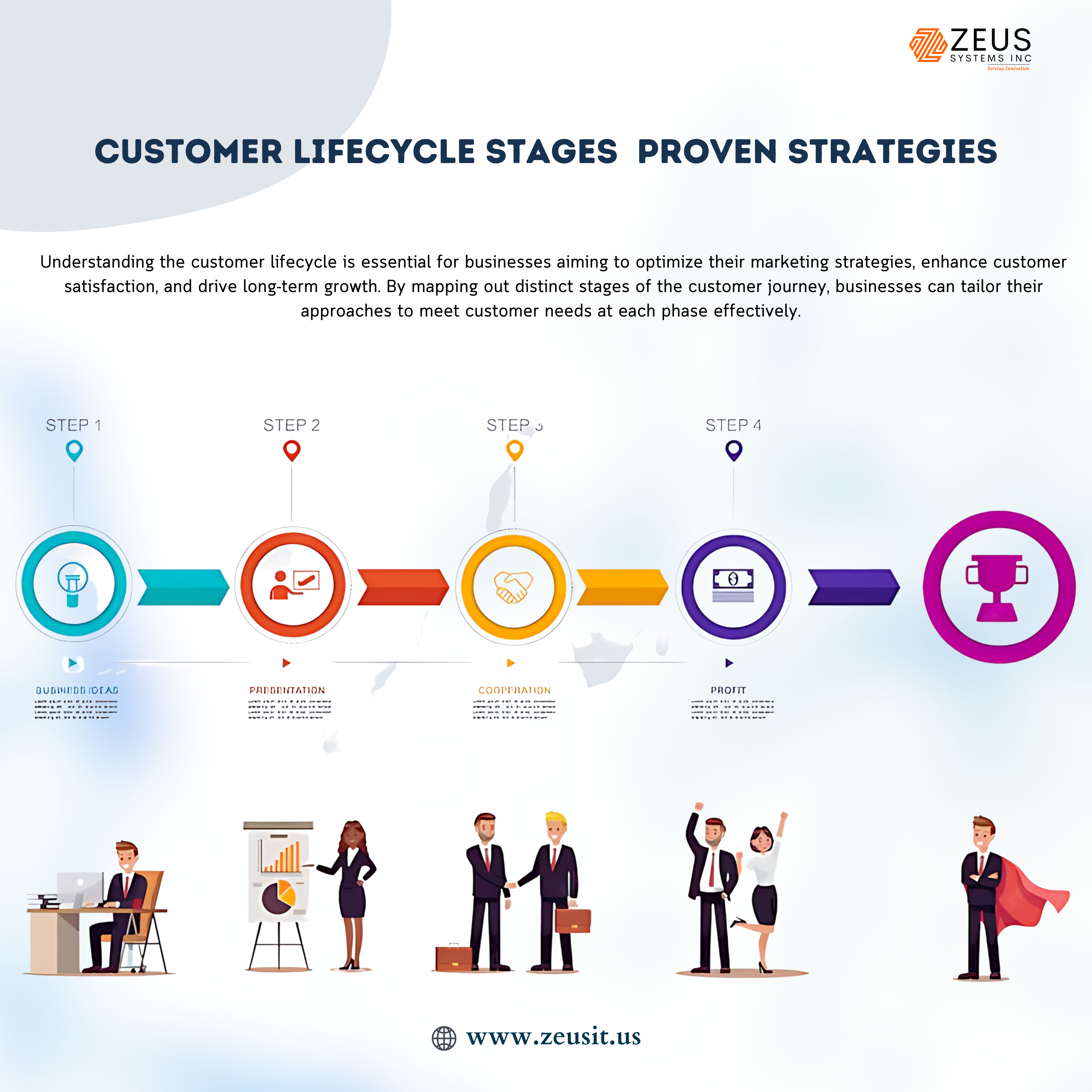Understanding the customer lifecycle is essential for businesses aiming to optimize their marketing strategies, enhance customer satisfaction, and drive long-term growth. By mapping out distinct stages of the customer journey, businesses can tailor their approaches to meet customer needs at each phase effectively. This article explores proven strategies for mapping customer lifecycle stages, key considerations, and practical examples to illustrate successful implementation. By implementing robust lifecycle mapping techniques, businesses can foster meaningful relationships, improve retention rates, and achieve sustainable business success.
Understanding Customer Lifecycle Stages
The customer lifecycle encompasses the journey that customers undergo from initial awareness and consideration of a product or service to post-purchase support and loyalty. The typical stages include:
1. Awareness: Customers become aware of the brand, product, or service through marketing efforts, referrals, or online research.
2. Consideration: Customers evaluate the offerings, compare alternatives, and consider whether the product or service meets their needs and preferences.
3. Decision: Customers make a purchase decision based on perceived value, pricing, features, and competitive advantages offered by the brand.
4. Retention: After the purchase, businesses focus on nurturing customer relationships, providing support, and encouraging repeat purchases or subscriptions.
5. Advocacy: Satisfied customers become advocates by recommending the brand to others, leaving positive reviews, or sharing their experiences on social media.
Proven Strategies for Mapping Customer Lifecycle Stages
1. Customer Journey Mapping: Visualize the entire customer journey, including touchpoints, interactions, and emotions at each stage. Use journey maps to identify pain points, opportunities for improvement, and moments of delight that can enhance customer experience.
2. Data Analytics and Segmentation: Utilize customer data analytics to segment customers based on demographics, behaviors, preferences, and purchasing patterns. Tailor marketing campaigns and communication strategies to address the specific needs and interests of each customer segment.
3. Personalization and Targeting: Implement personalized marketing initiatives across channels (email, social media, website) to deliver relevant content, offers, and recommendations that resonate with customers at different lifecycle stages.
4. Feedback and Engagement: Solicit feedback through surveys, reviews, and customer service interactions to understand customer satisfaction levels, identify areas for improvement, and measure loyalty metrics (Net Promoter Score, Customer Satisfaction Score).
Practical Examples of Successful Lifecycle Mapping
Amazon: Amazon uses sophisticated algorithms and data analytics to personalize product recommendations based on customers’ browsing history, purchase behavior, and preferences. By mapping the customer journey and leveraging predictive analytics, Amazon enhances user experience and drives repeat purchases.
HubSpot: HubSpot offers a comprehensive CRM platform that enables businesses to track and manage customer interactions at each lifecycle stage. Through automated workflows, personalized email campaigns, and lead nurturing strategies, HubSpot helps businesses optimize customer engagement and retention efforts.
Nike: Nike employs lifecycle marketing strategies to engage customers throughout their journey, from initial product discovery to post-purchase support. By offering personalized recommendations, exclusive content, and loyalty rewards, Nike fosters brand loyalty and advocacy among its customer base.
Key Considerations and Best Practices
1. Continuous Optimization: Regularly review and refine customer lifecycle maps based on evolving market trends, customer feedback, and business objectives. Stay agile and responsive to changes in customer preferences and behavior.
2. Cross-functional Collaboration: Foster collaboration between marketing, sales, customer service, and product teams to ensure alignment in customer-centric strategies and initiatives.
3. Measurement and Analytics: Establish key performance indicators (KPIs) to measure the effectiveness of lifecycle mapping strategies, such as customer retention rates, conversion rates, and customer lifetime value (CLV).
Conclusion
Mapping customer lifecycle stages is instrumental in guiding businesses to deliver personalized experiences, build lasting customer relationships, and drive sustainable growth. By leveraging data-driven insights, implementing targeted marketing strategies, and prioritizing customer-centricity, businesses can effectively navigate each stage of the customer journey and achieve meaningful business outcomes. As customer expectations evolve, mastering lifecycle mapping remains a critical component of successful customer experience management and business strategy.
References
Customer Lifecycle Management: Strategies for Success*. Retrieved from Harvard Business Review. Mapping the Customer Journey: Best Practices and Case Studies*. Retrieved from McKinsey & Company.

